12-7. One of the implications of the Sun
rising together with Naos ought to be that he here apparently 'changed sex' from male to female (i.e.
would no longer be rising but
would descend again as his apex no longer was in front and he was
growing old and weak).
.jpg)
... When this tremendous task had been
accomplished Atea took a third husband, Fa'a-hotu,
Make Fruitful. Then occurred a curious event. Whether
Atea had wearied of bringing forth offspring we are not
told, but certain it is that Atea and her husband
Fa'a-hotu exchanged sexes. Then the [male] eyes of
Atea glanced down at those of his wife Hotu and
they begat Ru. It was this Ru who explored the
whole earth and divided it into north, south, east, and west
...
... But the time of his predestined
defeat by the dark brother, Tezcatlipoca,
was ever approaching, and, knowing perfectly the rhythm
of his own destiny, Quetzalcoatl
would make no move to stay it. Tezcatlipoca,
therefore, said to his attendants, 'We shall give him a
drink to dull his reason and show him his own face in a
mirror; then, surely, he will be lost'. And he said to
the servants of the good king, 'Go tell your master that
I have come to show him his own flesh!' But when the
message was brought to Quetzalcoatl,
the aging monarch said, 'What does he call my own flesh?
Go and ask!' And when the
other was admitted to his presence: 'What is this, my
flesh, that you would show me?' Tezcatlipoca
answered, 'My Lord and Priest, look now at your flesh;
know yourself; see yourself as you are seen by others!'
And he presented the mirror. Whereupon, seeing his own
face in that mirror, Quetzalcoatl
immediately cried out, 'How is it possible that my
subjects should look upon me without fright? Well might
they flee from before me. For how can a man remain among
them when he is filled as I am with foul sores, his old
face wrinkled and of an aspect so loathsome? I shall be
seen no more, I shall no longer terrify my people' ...
|
MAY 1 (121) |
*2 |
NOV 2 (290 +
16) |
|
MAY 17 |
*4 |
NOV 20 (324) |
|
July 4 (121 + 64) |
Jan
5 (370, *290) |
July 20
(*121) |
July 24 (205
= 141 + 64) |
 |
 |
 |
 |
|
Eb3-20 (89) |
Eb3-22 (107 -
16) |
Ga2-27
(57 →
121 - 64) |
Ga3-2 (61) |
|
MULIPHEIN
(*105) |
WEZEN (*107) |
NAOS (*121) |
BRIGHT
FIRE (*125.4) |
|
NUNKI
(*288.4) |
AL BALDAH /
ALPHEKKA MERIDIANA |
20h (*304.4) |
DABIH (*308.0) |
|
OCT 31 (288 +
16) |
MAY 3 (107 +
16 = 123) |
NOV 16 (320 =
304 + 16) |
MAY 21 (125 +
16 = 141) |
... The key role of
Sirius, creator of the
Sothic cycle and the brightest star in the night (and visible close to the Full Moon in day 4 * 91 = 364),
was a fact which surely ought to have influenced the
ideas around the stars located at right ascension line
*284 (December 30, 364 = 80 + 284), and notably Φ Sagittarii
(*284.0) could have played a key role similar to that of
Sirius ...
 |
 |
 |
 |
|
Eb3-13 |
Eb3-14 |
Eb3-15 |
Eb3-16 (85) |
|
kua tua te vaivai |
rima |
kua tuo te tino |
te rima - te kihikihi |
|
Vaivai,
weak. PS Mq.:
vaivai,
soft, pleasant, agreeable. Sa., To.:
vaivai,
weak. Pau.:
Hakavaivai, to delay. Ta.:
vaivai,
to rest a bit. Mq.: vaivai, to
dilute, to thin. Ha.: waliwali,
soft, pasty. Churchill.
Tuo.
Mgv.: tuo, to speak long
without an answer. Ta.: tuo, to
cry out loudly. Ha.: kuo, to cry
with a loud voice. Churchill.
Tino.
1. Belly (as reported by a
Spaniard in 1770). 2. Genitalia (modern
usage). 3. Trunk (of a tree), keel (of a
boat); tino maîka, banana trunk;
tino vaka, keel. Vanaga. Body,
matter; mea tino, material;
tino kore, incorporeal. P Pau.:
tino, a matter, a subject. Mgv.:
tino, the body, trunk. Mq.: tino,
nino, the body. Ta.: tino,
id. Churchill.
Kihikihi, lichen;
also: grey, greenish grey, ashen.
Vanaga. Kihikihi, lichen T, stone
T. Churchill. |
|
VISIBLE CLOSE TO THE FULL MOON: |
|
No star listed (98) |
Aurigae (99.4), ψ2 Aurigae (99.5)
GEMMA (α Cor. Bor.) |
ψ4 Aurigae (100.5),
MEBSUTA (Outstretched) = ε Gemini
(100.7) |
SIRIUS = α Canis Majoris
(101.2),
ψ5 Aurigae (101.4),
ν Gemini (101.6), ψ6 Aurigae (101.7)
*60.0 = *101.4 - *41.4 |
|
...
In other words, the ancient Druidic
religion based on the oak-cult will be
swept away by Christianity and the door
- the god
Llyr - will languish forgotten in
the Castle of Arianrhod, the Corona
Borealis. This helps us to
understand the relationship at Rome of
Janus and the White Goddess Cardea who
is ... the Goddess of Hinges who came to
Rome from Alba Longa. She was the hinge
on which the year swung - the ancient
Latin, not the Etruscan year - and her
importance as such is recorded in the
Latin adjective cardinalis - as
we say in English 'of cardinal
importance - which was also applied to
the four main winds; for winds were
considered as under the sole direction
of the Great Goddess until Classical
times ...
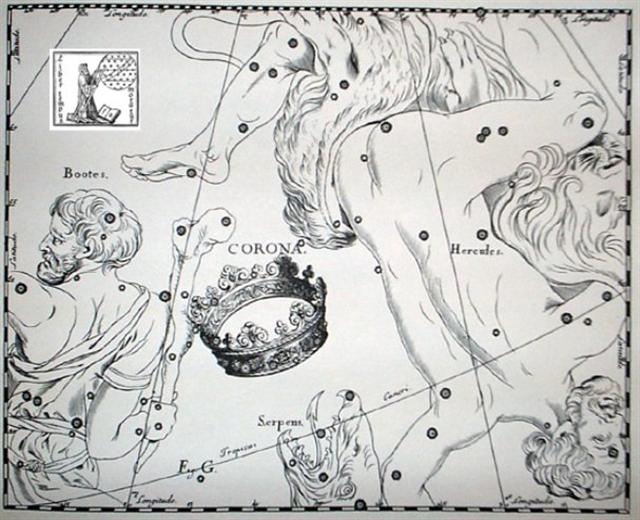 |
|
THE SUN: |
|
Abhijit-22 (Victorious)
θ
Cor. Austr.
(281.0),
VEGA = α Lyrae
(281.8) |
No star listed (282) |
ζ
Pavonis (283.4),
λ
Cor. Austr. (283.6),
DOUBLE DOUBLE =
ε
Lyrae
(283.7),
ζ
Lyrae (283.8)
*242.0 = *283.4 - *41.4 |
South Dipper-8
(Unicorn)
Φ
Sagittarii (284.0),
μ
Cor. Austr. (284.6),
η
Cor. Austr.,
θ
Pavonis (284.8) |
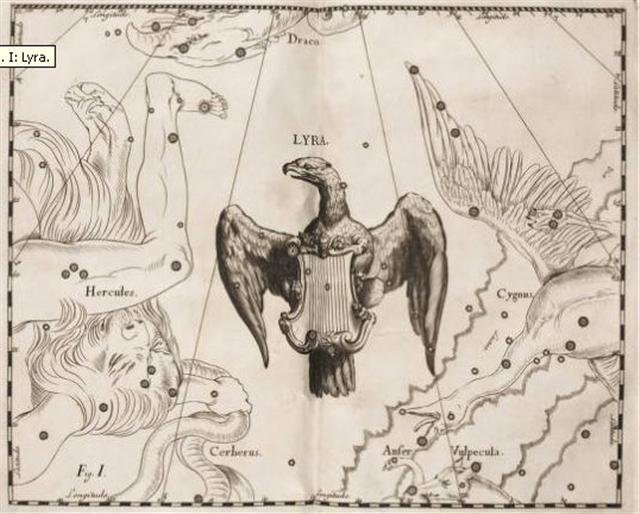
 |
 |
 |
 |
|
Eb3-17 |
Eb3-18 (14 * 29½ = 413) |
Eb3-19
(88, 414) |
|
kua moe - kua reva te ika |
tama - reva ika |
kiore - henua |
|
Reva.
To hang down; flag, banner.
Revareva, 1. To be hanging vertically;
to detach oneself from the background of the
landscape, such a person standing on top of
a hill: ku-revareva-á te tagata i ruga i
te maúga. 2. To cast itself, to project
itself (of shadows); revareva-á te kohu o
te miro i te maeha o te mahina, the
shadow of the tree casts itself in the light
of the moon. 3. Uvula. Vanaga. To hang, to
suspend, flag, banner; hakareva, to
hang up; hakarereva, to hang up, to
balance; hakarevareva, to wave. T
Pau.: reva, a flag; fakarevareva,
to hang up, to suspend. Mgv.: reva, a
flag, a signal. Mq.: éva, to hang up,
to be suspended, to wave a signal. Ta.:
reva, a flag, banner; revareva,
to wave. The germ sense is that of being
suspended ... any light object hung up in
the island air under the steady tradewind
will flutter; therefore the specification
involved in the wave sense is no more than
normal observation. Churchill. Mgv.: 1. A
plant. Ta.: reva, id. Mq.: eva,
id. Sa.: leva, id. Ma.: rewa-rewa,
id. 2. To cross, to pass across quickly;
revaga, departure. Ta.: reva, to
go away, to depart. Ma.: reva, to get
under way. Churchill. Ta.: The firmanent,
atmosphere. Ha.: lewa, the upper
regions of the air, atmosphere, the visible
heavens. Churchill. |
|
VISIBLE
CLOSE TO THE FULL MOON: |
|
July 1
(118 + 64) |
ALHENA (γ Gemini) |
3 (184 →
414 - 230) |
|
APRIL 28 (118 → 4 * 29½) |
29 |
30 |
 |
|
THE
SUN: |
|
Dec 31 (*285) |
Jan 1 (366 = 2 * 183) |
2 |
|
SHELIAK (Tortoise) =
β
Lyrae,
ν
Lyrae (285.1),
ο Draconis (285.5).
λ
Pavonis (285.7)
ATLAS (27 Tauri) |
χ
Oct. (286.0),
AIN AL RAMI (Eye of the Archer) =
ν
Sagittarii
(286.2),
υ
Draconis (286.4),
δ
Lyrae (286.3),
κ
Pavonis (286.5),
ALYA (Fat Tail) =
θ
Serpentis
(286.6)
*245.0 = *286.4 - *41.4 |
ξ
Sagittarii (287.1),
ω
Pavonis (287.3),
ε
Aquilae,
ε
Cor. Austr.,
SULAPHAT (Little Tortoise Shell) =
γ
Lyrae (287.4),
λ
Lyrae (287.7),
ASCELLA (Armpit) =
ζ
Sagittarii,
BERED = i Aquilae (Ant.)
(287.9)
*246.0 = *287.4 - *41.4 |
 |
 |
 |
 |
 |
 |
|
Eb3-20 |
Eb3-21 |
Eb3-22 (91) |
Eb3-23 |
Eb3-24 |
Eb3-25 (420) |
|
Rei tu |
tu
te niu - e huki |
kua noho i te niu -
kotia |
ku hakarava |
te hatu |
kiore - henua |
|
Hatu. 1. Clod of
earth; cultivated land; arable land (oone
hatu). 2. Compact mass of other
substances: hatu matá, piece of
obsidian. 3. Figuratively: manava
hatu, said of persons who, in
adversity, stay composed and in control
of their behaviour and feelings. 4. To
advise, to command. He hatu i te
vanaga rivariva ki te kio o poki ki ruga
ki te opata, they gave the refugees
the good advice not to climb the
precipice; he hatu i te vanaga
rakerake, to give bad advice. 5. To
collude, to unite for a purpose, to
concur. Mo hatu o te tia o te nua,
to agree on the price of a nua
cape. 6. Result, favourable outcome of
an enterprise. He ká i te umu mo te
hatu o te aga, to light the earth
oven for the successful outcome of an
enterprise. Vanaga. 1. Haatu,
hahatu, mahatu. To fold, to
double, to plait, to braid; noho hatu,
to sit crosslegged; hoe hatu,
clasp knife; hatuhatu, to deform.
2. To recommend. Churchill. In the
Polynesian dialects proper, we find
Patu and Patu-patu, 'stone',
in New Zealand; Fatu in Tahiti
and Marquesas signifying 'Lord',
'Master', also 'Stone'; Haku in
the Hawaiian means 'Lord', 'Master',
while with the intensitive prefix Po
it becomes Pohaku, 'a stone'.
Fornander. |
|
VISIBLE CLOSE TO THE FULL MOON: |
|
July 4 |
5
(186) |
6 (*107) |
7 |
8 |
9 (*110) |
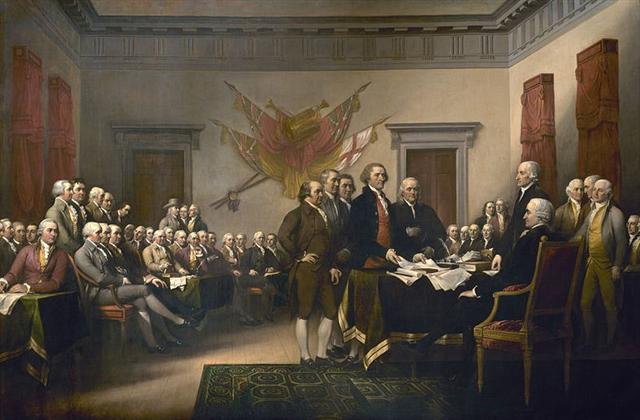 |
|
MAY 1 (11
* 11) |
2 |
3 |
4 |
5 |
6 (*66) |
|
ω
Gemini (105.4), ALZIRR (Button) =
ξ
Gemini
(105.7),
MULIPHEIN
(Oaths) =
γ
Canis Majoris
(105.8),
MEKBUDA (Contracted) =
ζ
Gemini
(105.9)
*64.0 = *105.4 - *41.4 |
7h
(106.5)
No star listed (106) |
WEZEN (Weight) =
δ
Canis Majoris
(107.1),
τ
Gemini (107.7),
δ
Monocerotis (107.9) |
No star listed (108) |
λ Gemini (109.4),
WASAT (Middle) = δ Gemini (109.8)
*68.0 = *109.4 - *41.4 |
No star listed (110) |
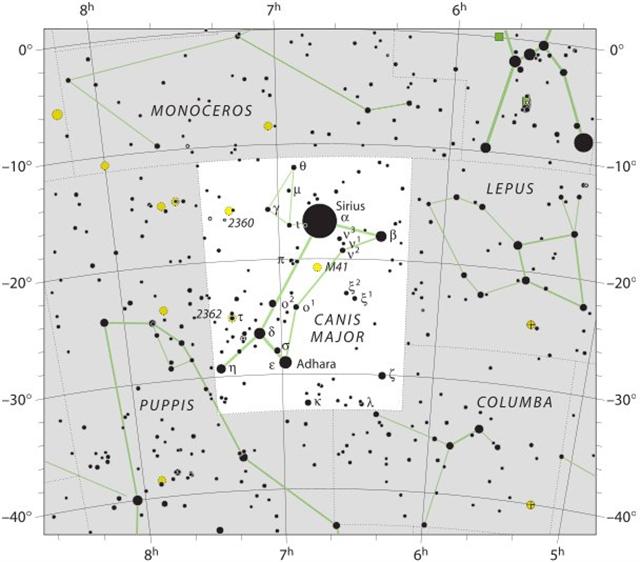
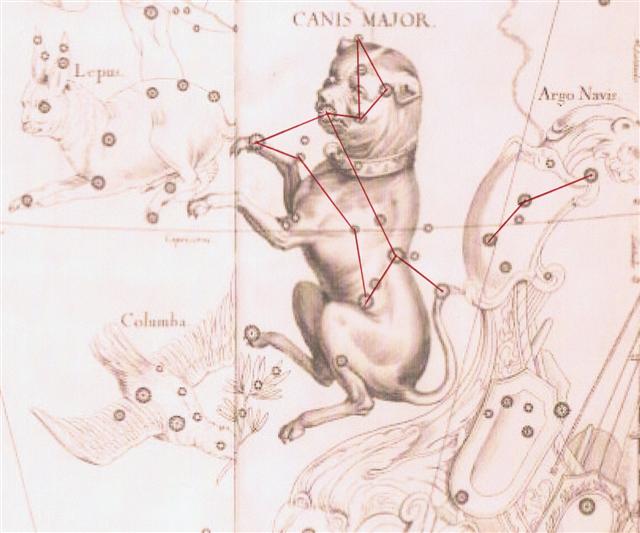 |
|
THE SUN: |
|
Jan 3 |
4 (369) |
5 (*290) |
6 |
7 |
8 |
|
Al Na'ām-18 (Ostriches)
/
Uttara Ashadha-21 (Elephant tusk, small bed)
NUNKI = σ Sagittarii
(288.4),
ζ Cor. Austr. (288.5),
MANUBRIUM = ο Sagittarii
(288.8), ζ Aquilae (288.9)
*247.0 = *288.4 - *41.4 |
19h (289.2)
λ
Aquilae (Ant.) (289.1),
γ
Cor. Austr (289.3),
τ
Sagittarii (289.4),
ι
Lyrae (289.5),
δ
Cor.
Austr. (289.8)
*248.0 = *289.4 - *41.4 |
Al
Baldah-19 (City)
AL BALDAH = π Sagittarii, ALPHEKKA (Dish)
MERIDIANA = α Cor. Austr.
(290.1), β Cor. Austr. (290.2) |
ALADFAR (The Talons) = η Lyrae
(291.1),
NODUS
II = δ Draconis
(291.5), ψ Sagittarii (291.6), τ Draconis
(291.7), θ Lyrae (291.8) |
ω Aquilae (292.1), ρ Sagittarii (292.6), υ
Sagittarii (292.7) |
π Draconis,
ARKAB PRIOR = β¹ Sagittarii
(293.0),
ARKAB POSTERIOR = β² Sagittarii,
ALRAMI (The Archer) = α Sagittarii
(293.2), χ Sagittarii (293.6 |
We could then turn out attention to the Middle star (Wasat,
*109), where its glyph number 93 on side b of the E
tablet suggests for instance the distance
to Ana-roto (Middle Pillar, Spica, *202):
|
MAY 1 (121) |
*2 |
NOV 2 (290 +
16 = 306) |
*2 |
NOV 4 (125 + 183 = 308) |
|
July 4 (121 + 64) |
Jan
5 (370, *290) |
Jan 7 (372,
*292) |
 |
 |
 |
|
Rei tu |
kua noho i te niu -
kotia |
te hatu |
|
Eb3-20 (89) |
Eb3-22 (107 -
16) |
Eb3-24 (93 =
89 + 4) |
|
MULIPHEIN (*121 - *16) |
WEZEN (*107) |
WASAT (*109) |
|
NUNKI
(*288.4) |
AL BALDAH /
ALPHEKKA MERIDIANA |
SPICA (*202)
- *93 = *109 (WASAT) |
|
OCT 31 (288 +
16) |
MAY 3 (107 +
16 = 123) |
MAY
5 (125) |
|
MAY 17 |
*4 |
NOV 20 (324) |
*2 |
NOV 22 (326) |
|
July 20
(*121) |
July 24 (205
= 141 + 64) |
July 26 (*127 = *63 + *64) |
 |
 |
 |
|
Ga2-27
(57 → 121 - 64) |
Ga3-2 (61) |
Ga3-4 (63 = 57 + 6) |
|
NAOS (*121) |
BRIGHT
FIRE (*125.4) |
Ο URSAE
MAJORIS (*127.4) |
|
20h (*304.4) |
DABIH (*308.0) |
HEKA
(*310) |
|
NOV 16 (320 =
304 + 16) |
MAY 21 (125 +
16 = 141) |
MAY 23 (143,
*63) |

From the Nose of the Great Dog (at Sirius) to the
Nose of the Great Bear there were 207 (July 26) -
181 (June 30) = 26 days (→
*26 at Polaris).
Counting from Wezen (*107) - which in the
Golden Age of the Bull would have risen with the
Sun in day 80 + 107 - 64 = 123 (MAY 3) - to the Nose
of the Great Bear there were 20 days. This was half
a year away from the culmination of Heka in
NOVEMBER 22 (326). (→
326 - 20 - 183 = 123).
... The Heka triplet is where we
otherwise would have expected to see a bright single star
representing Orion's head (when looking from a location in
the northern hemisphere) ... λ and
the two stars phi furnish an easy refutation of the
popular error as to the apparent magnitude of the moon's
disc, Colas writing of this in the Celestial Handbook
of 1892: In looking at this triangle nobody would think that
the moon could be inserted in it; but as the distance from
λ to φ¹
is 27', and the distance from φ¹
to φ² is 33', it is a positive
fact; the moon's mean apparent diameter being 31' 7''. This
illusion, prevalent in all ages, has attracted the attention
of many great men; Ptolemy, Roger Bacon, Kepler, and others
having treated of it. The lunar disc, seen by the naked eye
of an uninstructed observer, appears, as it is frequently
expressed 'about the size of a dinner-plate', but should be
seen as only equal to a peppercorn
...
Here we can associate (→) from
326 to the number of the last glyph on side a of the E tablet:
|
a1 |
32 |
32 |
b1 |
42 |
368 |
|
a2 |
33 |
65 |
b2 |
27 |
395 |
|
a3 |
35 |
100 |
b3 |
16 |
411 |
|
22 |
433 |
|
a4 |
36 |
136 |
b4 |
42 |
475 |
|
a5 |
42 |
178 |
b5 |
35 |
510 |
|
a6 |
39 |
217 |
b6 |
36 |
546 |
|
a7 |
39 |
256 |
b7 |
42 |
588 |
|
a8 |
4 |
260 |
b8 |
40 |
314 * 2 = 628 |
|
9 * 29 |
|
30 |
290 |
|
a9 |
36 |
326 |
sum total |
260 * 2 + 108
260 + 368 =
314 * 2 |
|
sum |
260 + 66 |
And similarly from 326 - 20 - 183 = 123 to 123 as in the number
of signs on the top surface of the Phaistos disc:
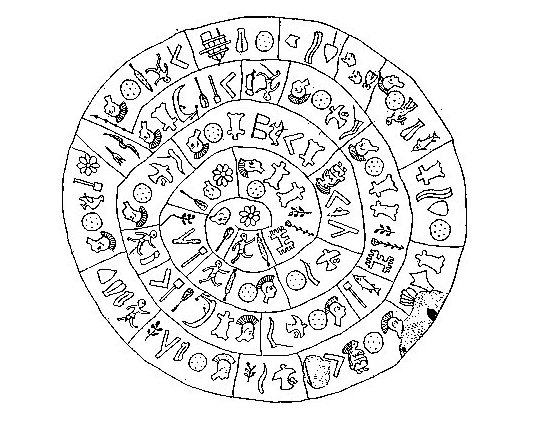
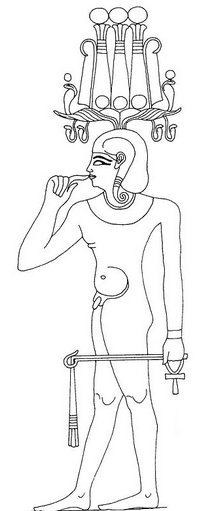
|
.jpg)

















